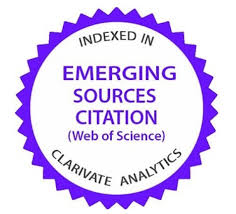The lack of recognition of the other affects school coexistence
DOI:
https://doi.org/10.35197/rx.12.02.2016.31.alKeywords:
discrimination, conflicts, school life, peaceful recognition of the otherAbstract
School is the ideal place to teach how to live together as ourselves (that is, to work on sameness and otherness, since we are different but equal in dignity and human rights). It also develops the importance of “educating for peace” in the face of the deterioration of coexistence, a product of discrimination. We invite the reader to rethink the role of the school as a promoter of spaces for peace, with the interaction of school-family-community being vital; promoting dialogue, tolerance, and respect for differences in these spaces, in order to build an Education for Peace.
Downloads
References
Alexis, R. (1993). “Teorías de los derechos fundamentales”, Mc Graw Hill, Madrid.
Banz, C., Mena, I., Romagnoli C. y Valdés, A. M. (2008). “Convivencia Escolar”. Documento Valoras UC.
Bello, D. J. (2013). “Educación Intercultural. ¿Trabajar con los diferentes o las diferencias?” Revista Cientifica Ra Ximhai, Universidad Autónoma Indígena de México, ISSN 1665-0441. Enero- Abril.
Bobadilla, M. D. R. A. (2012). “La interculturalidad en la educación: entre la construcción social y la política pública”. Educ. Foco.Juiz de Fora, v 17, n I.
Caireta, S. M. y Barbeito, T. C. (2005). “CUADERNOS DE EDUCACIÓN PARA LA PAZ. Introducción de conceptos: paz, violencia, conflicto”. Editorial: Escola de Cultura de Pau (Universidad Autónoma de Barcelona). España.
COMISIÓN NACIONAL DE LOS DERECHOS HUMANOS. (2012). “La Discriminación y el derecho a la no discriminación”, CNDH, México.
CONAPRED. (2004). “Ley Federal para Prevenir y Eliminar la Discriminación”. CONAPRED. México. Delors, J. (1997). “La Educación encierra un Tesoro”. Madrid: Santillana Unesco.
Falcón, M. I. (2008). Anotaciones sobre identidad y" otredad". Revista electrónica de psicología política, 6(16).
Galtung, J. (2003). “Paz por medio pacíficos. Paz y conflicto, desarrollo y civilización”. Bilbao. Ministerio de Educación (MINEDUC). (2002). “Política de Convivencia Escolar”. Chile.
Muñoz, A. G. (1983). “Pedro Laín Entralgo: El encuentro interhumano”. In Logos. Anales del Seminario de Metafísica (No. 18).
ONU. (1948). “Declaración Universal de los Derechos Humanos”. Disponible en: http://www.un.org/es/documents/udhr/
ONU. (1997). “Manifiesto 2000 PARA UNA CULTURA DE PAZ Y DE NO VIOLENCIA”. Disponible en:
http://manifiesto2000.unesco.org/sp/sp_manif2000_t.htm.
Puerta, L y Builes, B. (2011). “Abriendo espacios flexibles en la escuela”. Universidad de Antioquia, Colombia.
Reyes, M. F. (1995). “El derecho fundamental a no ser discriminado por razón de sexo”. Mc Graw Hill, Madrid.
Rodríguez, Z J. P. (2004). “¿Qué es la discriminación Y Como combatirla?”. Consejo Nacional para Prevenir la Discriminación.
Said, E. (1990). “Orientalismo”. Madrid: Prodhufi.
Sartre, J. P. (1976). “El ser y la nada”. Buenos Aires: Losada.
Silva, E, J. P. (2005). “Discursos de Frontera: La otredad y la mismidad en tres documentales1”.
Revista Austral de Ciencias Sociales, 9.
Downloads
Published
How to Cite
Issue
Section
License
Copyright (c) 2016 Apolinar López Miguel

This work is licensed under a Creative Commons Attribution-NonCommercial 4.0 International License.
Usted es libre de:
- Compartir — copiar y redistribuir el material en cualquier medio o formato
- Adaptar — remezclar, transformar y construir a partir del material
- La licenciante no puede revocar estas libertades en tanto usted siga los términos de la licencia
Bajo los siguientes términos:
- Atribución — Usted debe dar crédito de manera adecuada , brindar un enlace a la licencia, e indicar si se han realizado cambios . Puede hacerlo en cualquier forma razonable, pero no de forma tal que sugiera que usted o su uso tienen el apoyo de la licenciante.
- NoComercial — Usted no puede hacer uso del material con propósitos comerciales .
- No hay restricciones adicionales — No puede aplicar términos legales ni medidas tecnológicas que restrinjan legalmente a otras a hacer cualquier uso permitido por la licencia.








